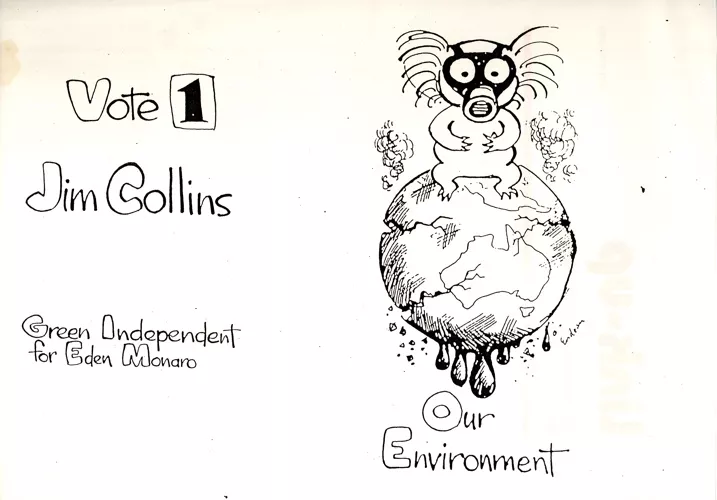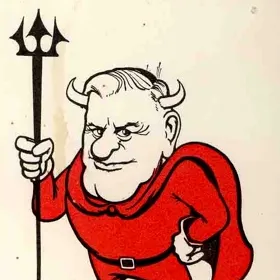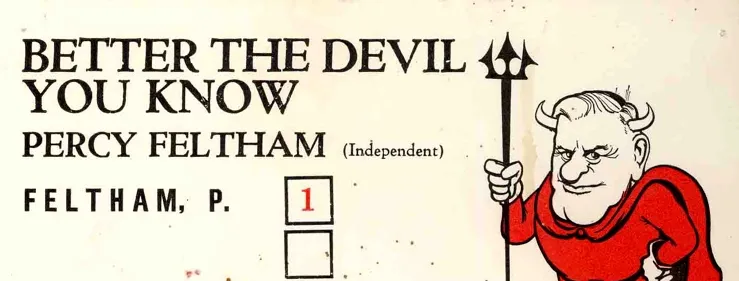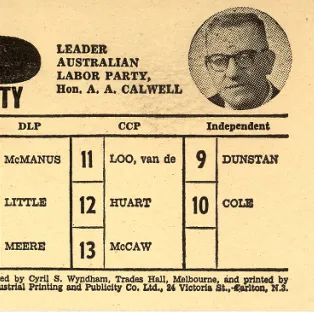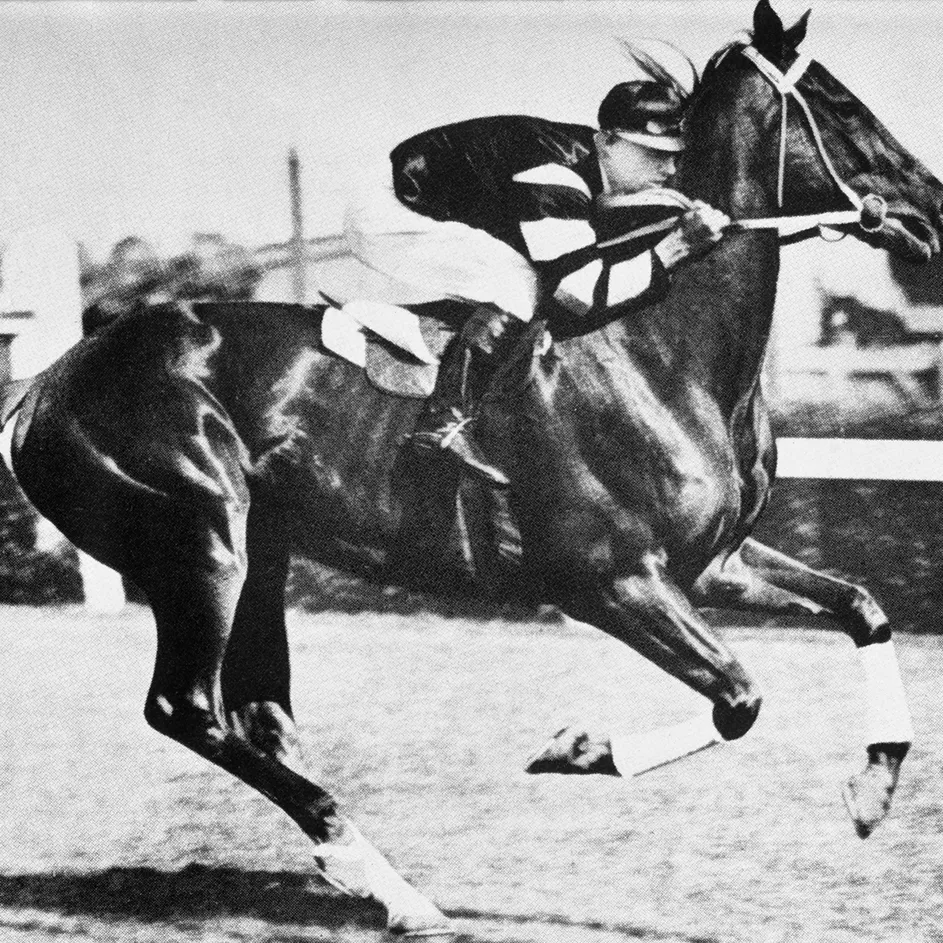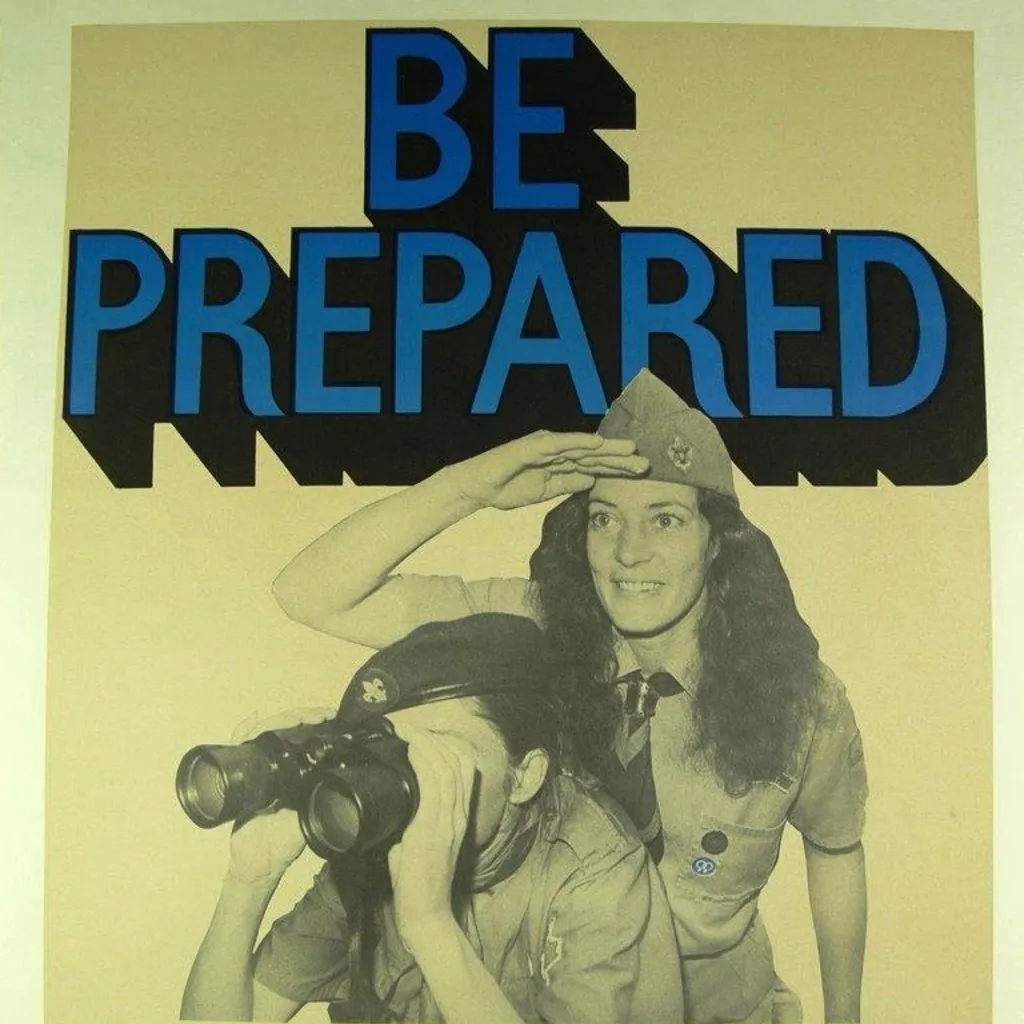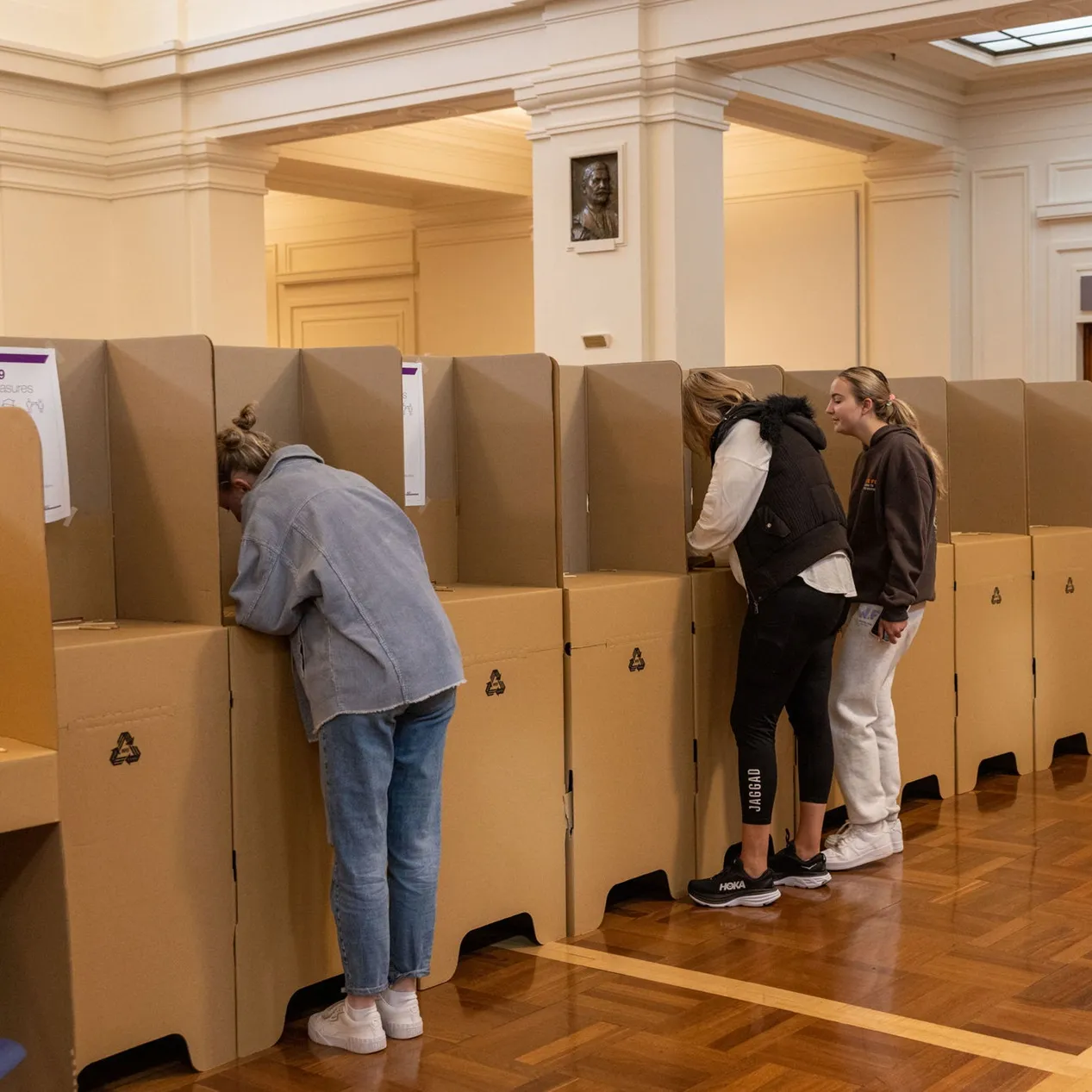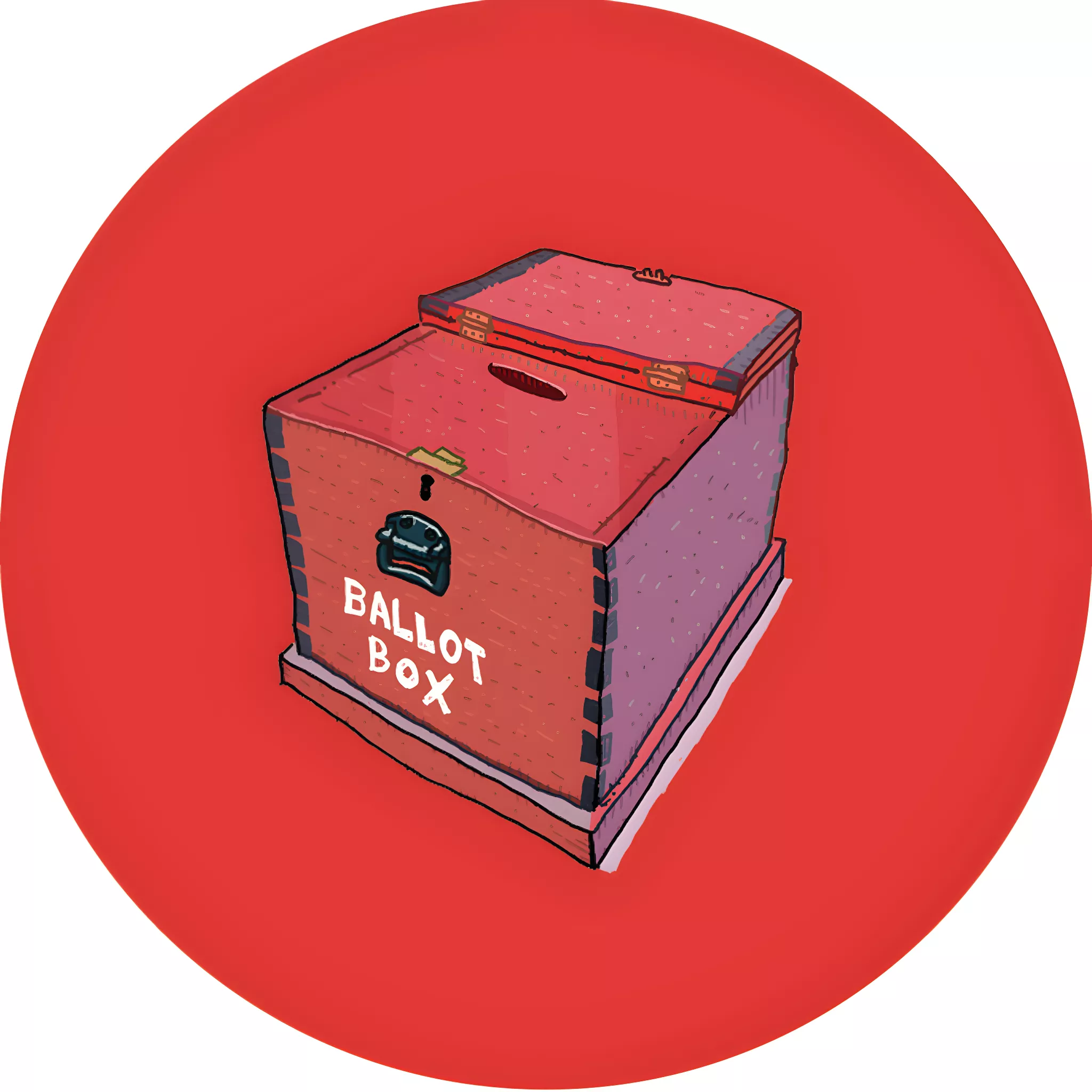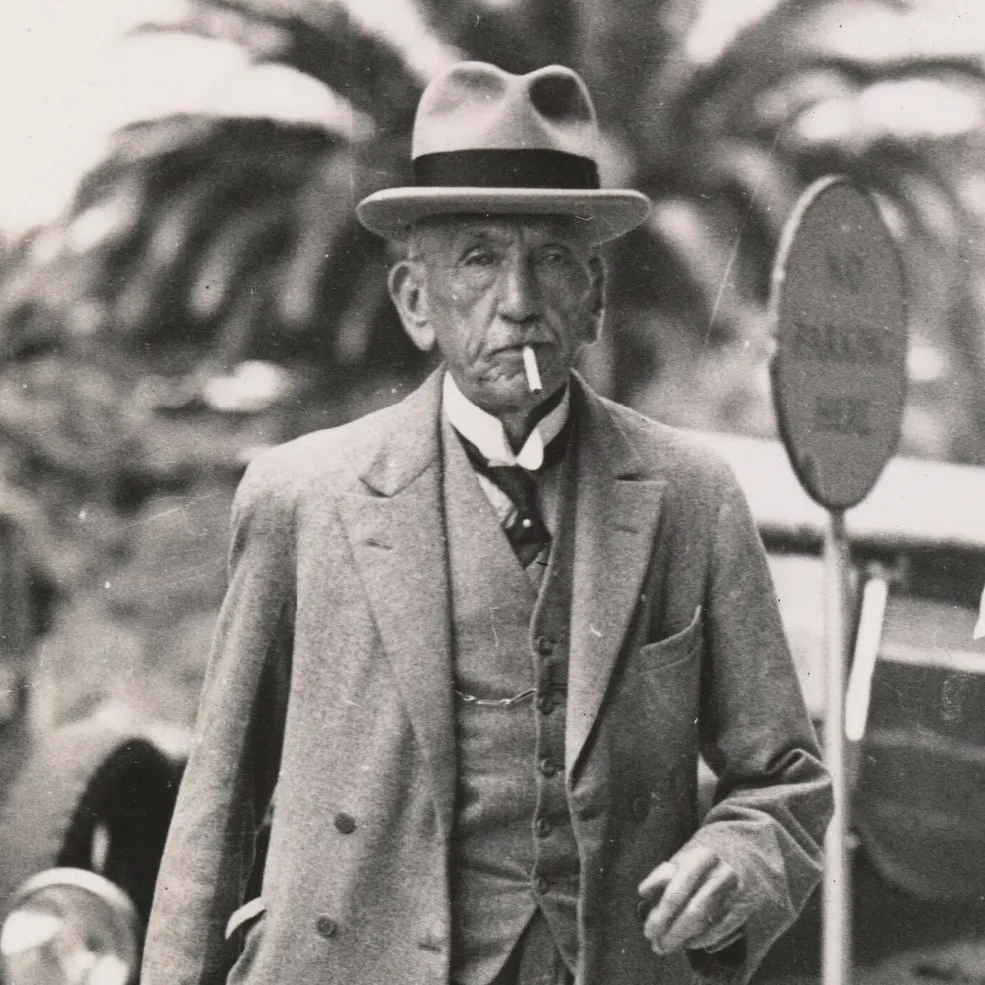On Paper: some election ephemera
- DateWed, 29 Jun 2016
As an election campaign draws to a close, most Australians can look forward to being handed dozens of pieces of paper while queuing to vote.
Many will try to keep them all in one hand while holding their sacred democracy sausage in the other. Some will throw them away, possibly without reading them. That’s because things like political flyers and how-to-vote cards are by nature ephemeral.
The word 'ephemera' means 'designed to be used for a short time'. While most people who receive election campaign material throw it away, sometimes immediately, there are always the odd few who don't. Museums and collectors are grateful for that, because you never know when something flimsy and disposable might turn into a gem.
Here are some interesting, creative or quirky examples of election ephemera from elections past.
How many voters would actually vote?
Voting is compulsory in Australia, which means at most elections more than 90% of enrolled voters cast a vote. It wasn’t always so, and the cigarette card from 1906 (below) shows how some people profited from non-compulsory voting in unusual ways.
This card asks people to guess how many voters would actually vote, and offers a cash prize of £100 (in today's money, over $14,000).
The number of votes cast was only 951,688 for the House of Representatives (due to the way the Senate votes were counted, it's impossible to say how many voted for the Upper House). This was a turnout of just over half, which demonstrates a reason Australia turned to compulsory voting two decades later.
Sadly, we don’t know who won the money.
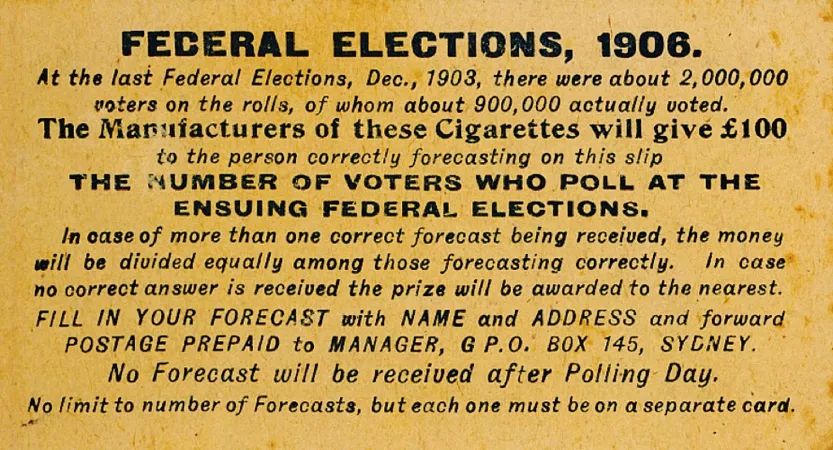
The very plain How to Vote
Making material memorable and eye-catching is an important part of salesmanship, which is why we can look at this How to Vote card from 1925 and wonder how it ever worked. Compared to the photo-heavy, glossy, branded papers handed out today at polling stations, this one is very plain. Can you spot something else that’s missing?
Nowhere on the card does it say which party the candidate represents. John Latham was a Nationalist candidate, who later led that party. But the word ‘Nationalist’ doesn’t appear anywhere here. That’s because the government led by Stanley Bruce was campaigning heavily on its unity and record, and wanted to be thought of as the government doing a good job, rather than just one party. This strategy has been followed countless times before, and since.
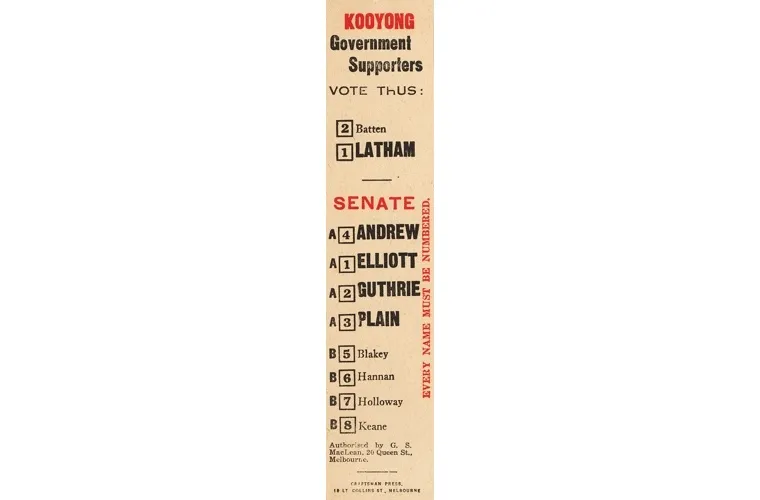
Vote for Barry to fight communism
The Australian Labor Party (Anti-Communist), which would later form into the Democratic Labor Party, produced this flyer for its leader in Victoria, Bill Barry, in 1955 (slide 3). The election of that year was caused when Barry’s bloc, having left Labor, voted to bring down the government. For that act, Labor members threw thirty pieces of silver at his feet.
The message of this flyer is very blunt – vote for Barry (he, like others in his party, described themselves as ‘Official Labor’) to fight communism. Some others even offered a return to a ‘Christian Social Order’.
Barry’s anti-communism message may not have been the best one for the (then, as now) left-leaning Carlton electorate and Barry was defeated at the 1955 election. He could take some solace though – Anti-Communist preferences largely favoured the Liberal-Country parties, and helped to elect Liberal leader Henry Bolte as Premier in a landslide. Bolte would stay Premier for a record 17 years, and Labor would not regain power until 1982. In 2010, Barry’s grandson Peter Kavanagh became the first DLP member to be elected in Victoria since 1955.
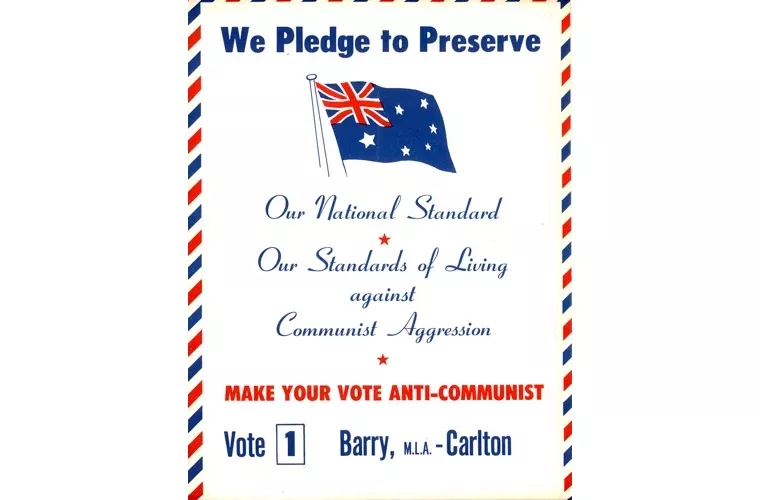
Better the devil you know
Imagine this: a politician releases official campaign material featuring him with horns and a pitchfork. Not his opponent; himself. If this happened today, how do you think social media would react?
Fortunately, Victorian upper house member Percy Feltham had no internet to worry about when he released this How to Vote card for the 1967 state election. Feltham had been a Country Party member until 1965, and campaigned for re-election as an Independent. His pitch is clear: better to re-elect Feltham, whether you like him or not, than risk someone new and unknown.
As innovative and noteworthy as it is, voters didn’t respond as Feltham would like. He lost his seat at the election.
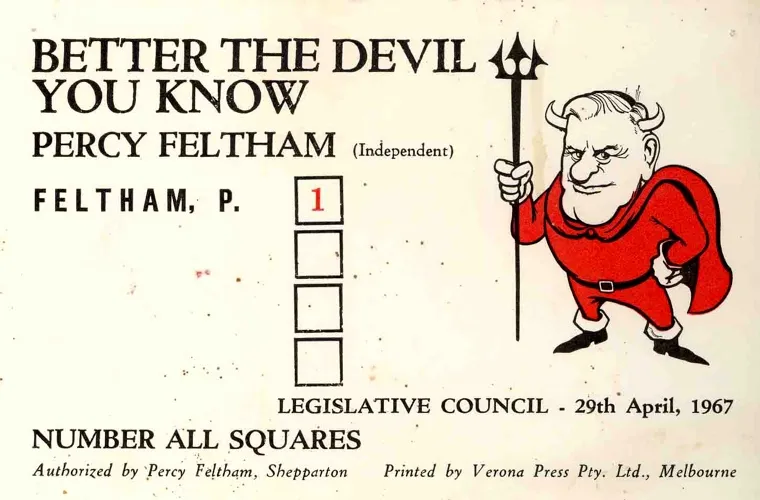
Women’s Electoral Lobby
Sometimes you need help deciding who to vote for. We all have our own ways of making up our minds, and for some people there are single issues which can be the critical factor.
The newly-formed Women’s Electoral Lobby issued this leaflet to the voters of Maribyrnong in 1972. They ranked each of the six House of Representatives candidates, and gave each of them marks out of ten on issues they saw as critical to women. The Liberal candidate scores very poorly on equality in work and education but very well in childcare, while the Labor candidate does well across the board. Interestingly, K.M. Young is graded poorly despite being a woman. This might be because of her politics – while on the ballot as an independent, Katrina Young was actually a neo-Nazi, representing the National Socialist Party of Australia. It’s not hard to guess why they might have favoured the male Labor candidate!
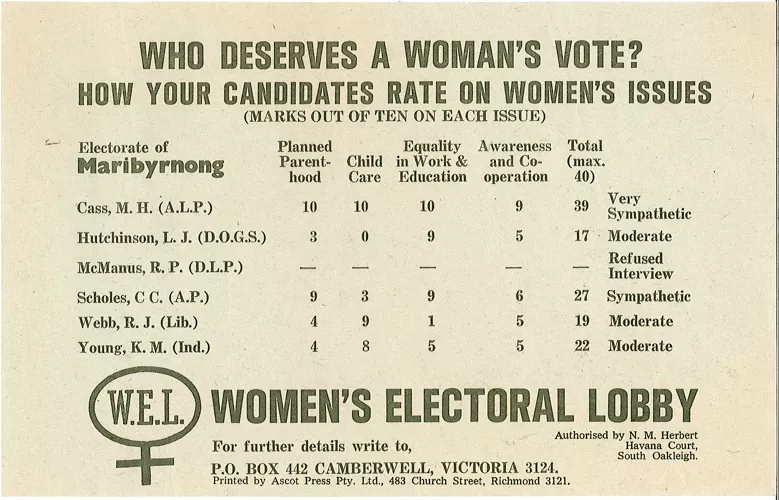
Targeted policies
As Australia became more diverse and multicultural, parties and candidates began to include different languages in their campaign material, and target policies at migrants and their descendants.
The Communist Party of Australia issued this flyer in 1978. It is written in Croatian, Italian, Spanish, Greek, and Arabic and includes policies specifically designed to appeal to migrant groups. These include prohibiting race and sex discrimination, recognising foreign education and establishing an independent body for multicultural TV and radio.
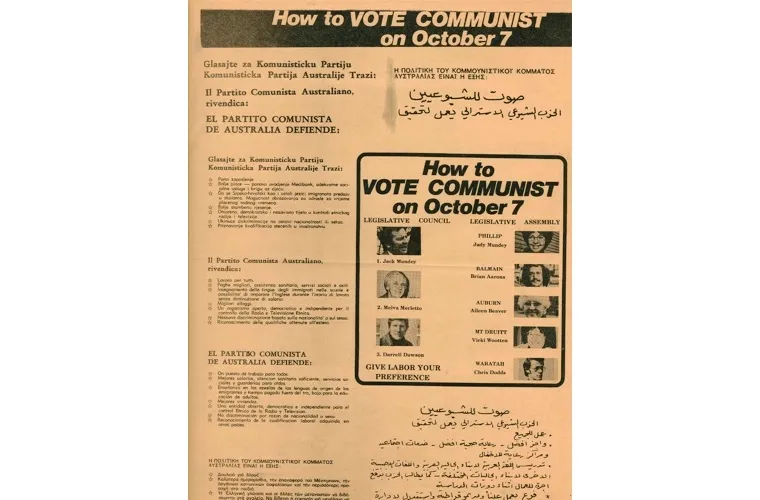
Raise the Standard
Modern politics is often derided as over-reliant on ‘three-word slogans’, but the art of the campaign song is becoming a dying one. Songs either written or co-opted for candidates have always been very common in the United States, but less so in Australia. The ‘It’s Time’ song from the ALPs 1972 campaign is the most famous example, but at other elections all sides of politics have tried to recapture that spark with a jaunty tune to inspire their followers.
This very flimsy long-playing record is from 1980, and contains the song ‘Raise the Standard’ on one side, and messages from Labor leader Bill Hayden and NSW Premier Neville Wran on the other. It was sent out in the mail to voters and party supporters. How many of them do you think would have actually played it?
The name ‘Raise the standard’ (which was also the party’s slogan), had a rather clever double-meaning. On one hand it referred to the ‘rot’ which Hayden and Labor declared had set in during the Fraser government, but on the other, a ‘standard’ is a flag, and by evoking the idea of raising a flag, Labor’s campaign message had overtones of patriotism and old-school socialist rabble-rousing.
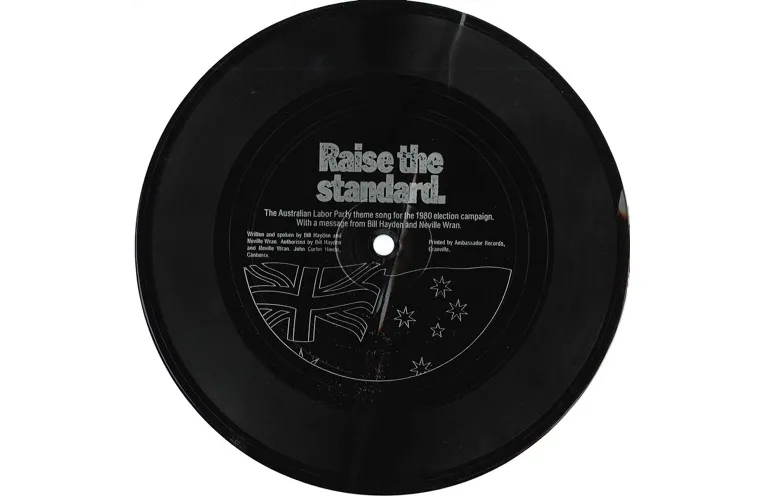
Doing things on the cheap
There’s something wonderfully endearing about this hand-drawn flyer for a Green Independent candidate. This flyer is from 1990, at a time when the Australian Greens had yet to become the significant force they are today. Many candidates around this time campaigned as ‘greens’ despite having no official backing from a state or federal party.
Without the party machine to print slick and spiffy campaign literature, independents sometimes have to do things on the cheap. Jim Collins’ campaign saw him place third, with a respectable 10% of the vote. Was it the koala that did it?
